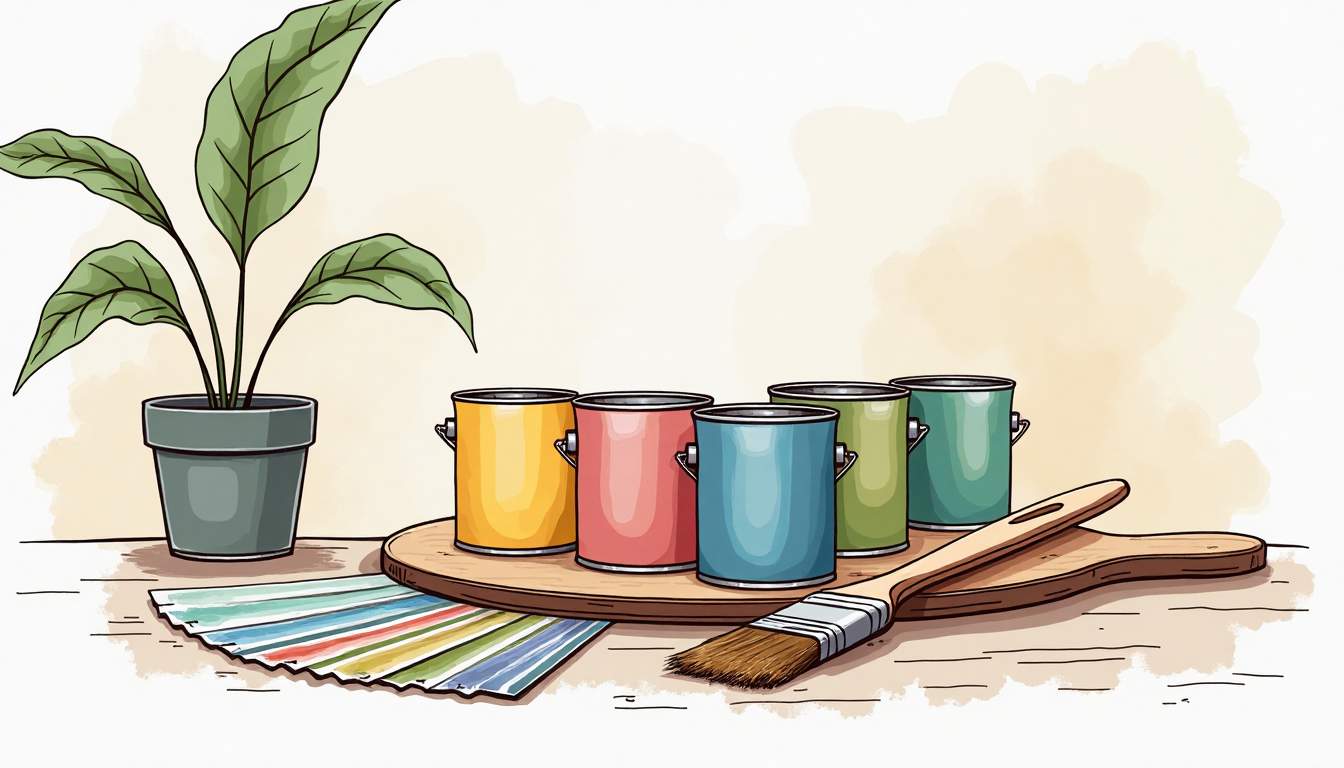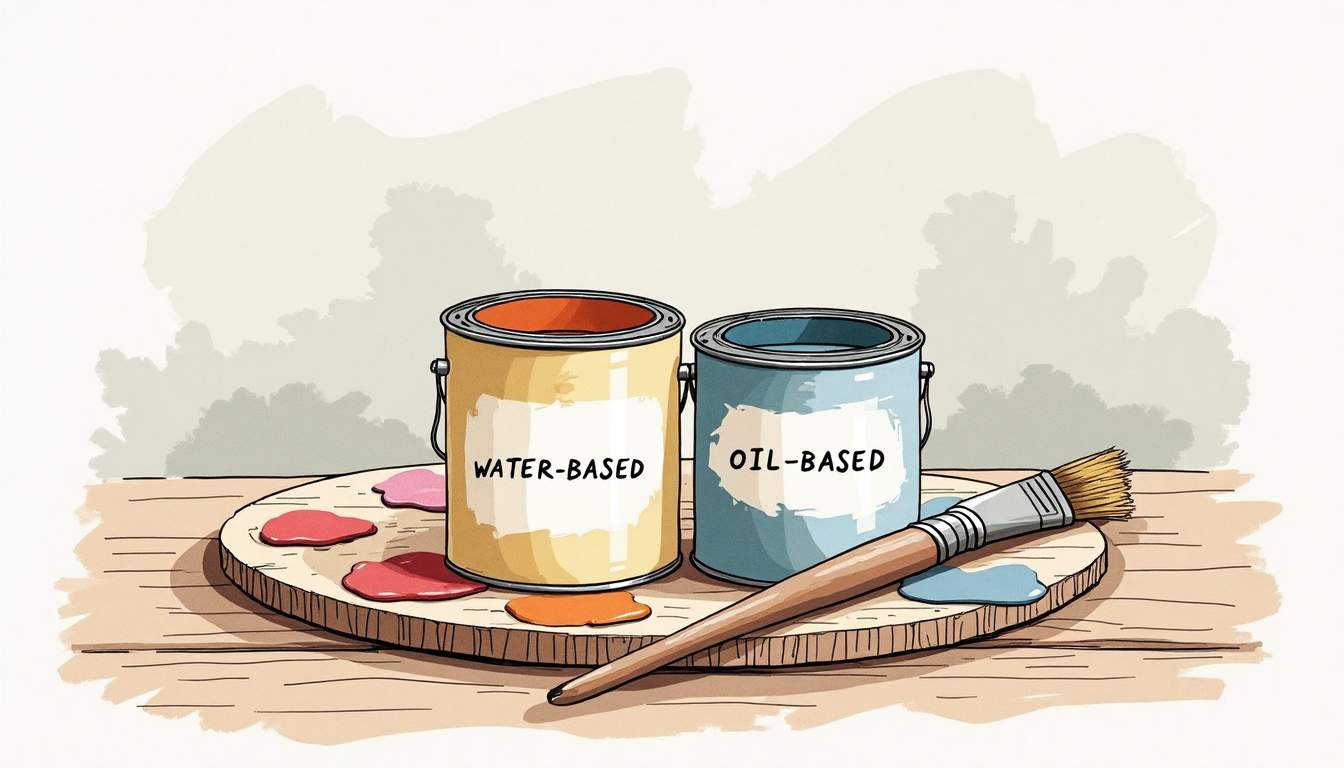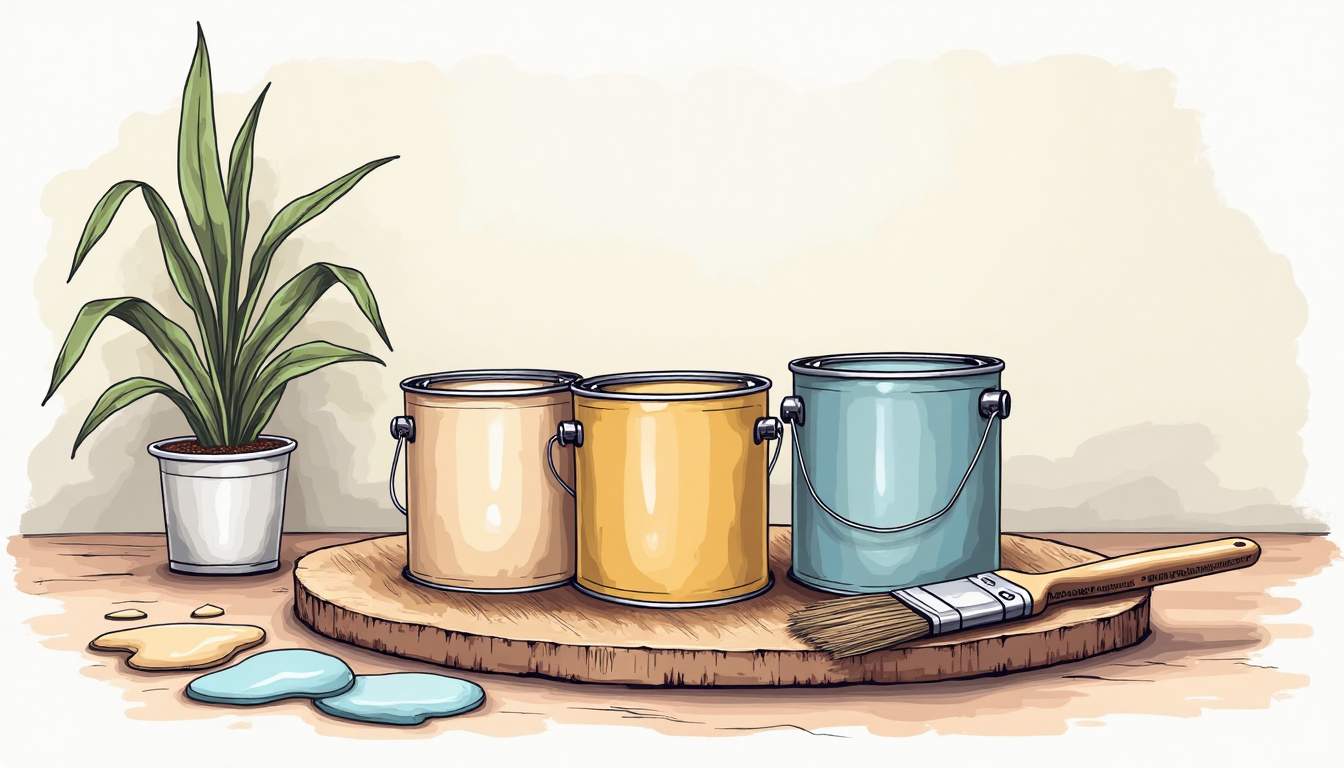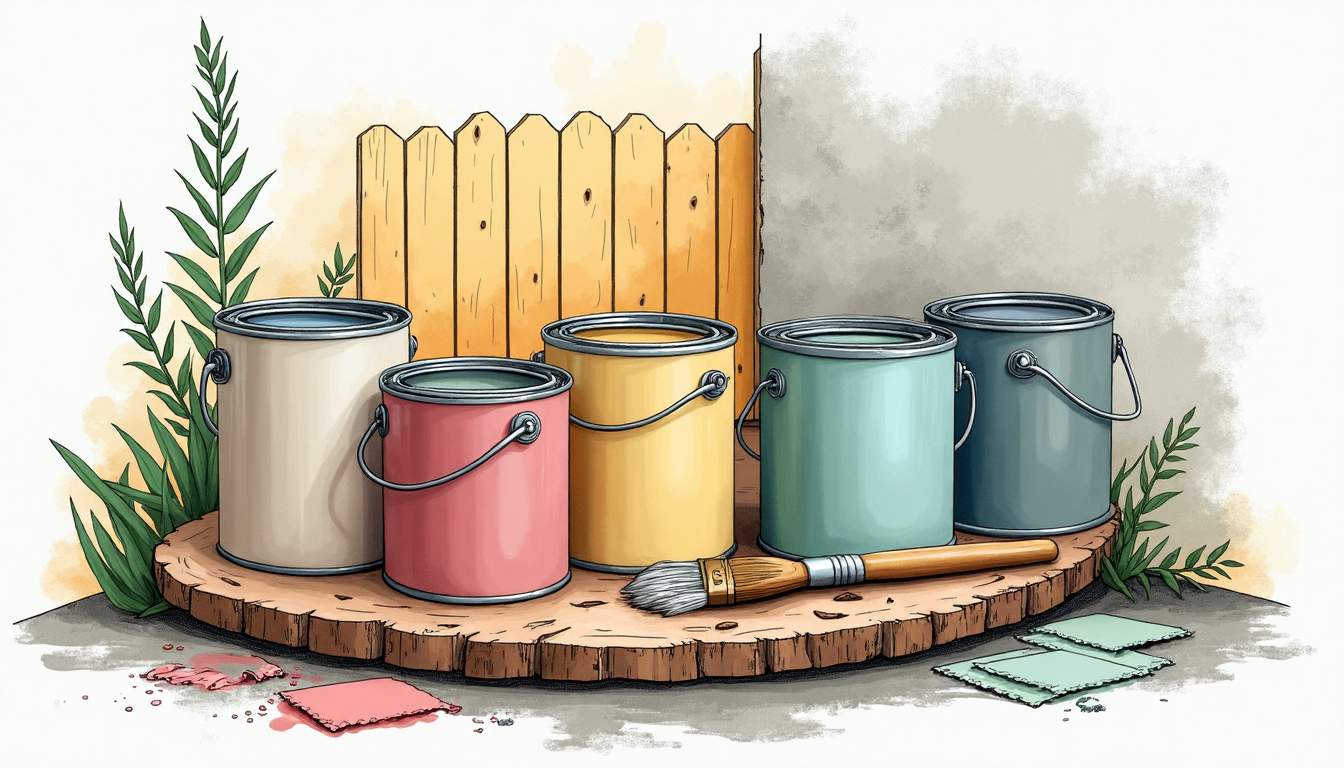
Choosing the perfect paint for your home can feel overwhelming given the vast array of options available. From different finishes to various formulations, the right paint not only enhances your home’s aesthetic but also protects surfaces and ensures durability. Whether you’re planning a full interior makeover or just touching up a single room, understanding the types of paint and their best uses is essential for achieving beautiful, lasting results.
Understanding Paint Basics: What’s Inside the Can?
Before diving into specific paint types, it helps to know what paint is made of. Paint generally consists of four main components: pigments, binders, solvents, and additives. Pigments provide color and opacity. Binders hold the pigment particles together and help the paint adhere to surfaces. Solvents (or thinners) control the paint’s consistency, making it easier to apply. Additives enhance certain properties, such as drying time or mildew resistance.
Knowing these components clarifies why different paints behave differently and why some are better suited for certain surfaces or environments. For example, latex paints use water as a solvent, drying quickly and cleaning up easily, while oil-based paints use organic solvents, offering a smoother finish but requiring mineral spirits for cleanup.
Each of these components plays a crucial role in the overall performance of the paint. Pigments, for instance, not only determine the color but also contribute to the paint's durability and resistance to fading when exposed to sunlight. The quality of the binder can significantly affect the paint's adhesion properties, influencing how well it sticks to various substrates, from wood to metal. Moreover, the choice of solvent impacts not only the application process but also the environmental footprint of the paint, with water-based formulations generally being more eco-friendly compared to their oil-based counterparts. To learn more about high-quality and eco-conscious painting solutions, visit Painting Service Singapore for expert guidance.
Additionally, the role of additives cannot be understated. These substances can modify the paint’s characteristics in numerous ways, such as improving flow and leveling, which helps achieve a smooth finish without brush marks. Some additives are specifically designed to enhance the paint's resistance to mildew, making them ideal for humid environments like bathrooms or kitchens. Others may be included to improve the paint's durability against scratches and stains, which is particularly beneficial in high-traffic areas. Understanding these nuances can empower homeowners and DIY enthusiasts to select the right paint for their projects, ensuring both aesthetic appeal and long-lasting results.
Choosing Between Water-Based and Oil-Based Paints
Water-Based (Latex) Paints
Water-based paints, commonly known as latex paints, are the most popular choice for interior walls and ceilings. They dry quickly, have low odor, and clean up easily with soap and water. Latex paints are also more environmentally friendly compared to oil-based options, emitting fewer volatile organic compounds (VOCs).

These paints are flexible, which helps them resist cracking and peeling over time. They are ideal for drywall, plaster, and previously painted surfaces. However, latex paints may not adhere as well to certain surfaces like metal or high-traffic areas without proper priming. Additionally, advancements in paint technology have led to the development of high-performance latex paints that can mimic the finish and durability of oil-based paints, making them suitable for a wider range of applications.
Another advantage of water-based paints is their quick drying time, which allows for faster project completion. Homeowners and professionals alike appreciate the ability to apply multiple coats in a single day, reducing downtime and inconvenience. Furthermore, many modern latex paints come with added features such as stain resistance and mildew inhibitors, making them an excellent choice for kitchens and bathrooms where moisture and stains are common concerns.
Oil-Based Paints
Oil-based paints offer a hard, durable finish that is excellent for trim, doors, and furniture. They level out well, reducing brush marks and providing a smooth, glossy surface. This makes them a popular choice for areas that require frequent cleaning or are exposed to wear and tear.
On the downside, oil-based paints take longer to dry, have a stronger odor, and require solvents like mineral spirits for cleanup. They also tend to yellow over time, especially in low-light areas. Due to environmental regulations, oil-based paints are less commonly used today but remain valuable for specific applications where durability is paramount. For instance, they are often favored for outdoor furniture and metal surfaces that need to withstand the elements, as their robust formulation provides superior protection against rust and corrosion.
Moreover, when considering the application of oil-based paints, it is essential to note that they can be more challenging to work with due to their longer drying times. This means that painters must be more cautious about dust and debris settling on wet surfaces, which can mar the finish. However, for those who are willing to invest the extra time and effort, the end result can be a stunning, long-lasting finish that enhances the beauty of woodwork and cabinetry. Additionally, oil-based paints can be tinted to a wider range of colors, allowing for greater customization in design projects.
Selecting the Right Paint Finish
The finish of the paint affects both the appearance and the durability of the painted surface. Choosing the right finish depends on the room’s function, lighting, and how much wear and tear the surface will endure.

Flat or Matte Finish
Flat or matte paints have no shine and provide a smooth, non-reflective surface. They are excellent at hiding imperfections on walls and ceilings. Because of their porous nature, flat paints can absorb stains and are more difficult to clean, so they are best suited for low-traffic areas like adult bedrooms or ceilings.
Eggshell Finish
Eggshell finish offers a slight sheen, resembling the surface of an eggshell. It balances aesthetics and practicality by hiding minor imperfections while being easier to clean than flat paint. Eggshell is a versatile choice for living rooms, dining rooms, and bedrooms.
Satin Finish
Satin paints have a soft sheen and are more durable and washable than eggshell. They resist moisture and stains, making them ideal for high-traffic areas such as hallways, family rooms, and kitchens. Satin finishes also work well on trim and doors.
Semi-Gloss Finish
Semi-gloss paint has a noticeable shine and is highly durable and moisture-resistant. It’s commonly used in bathrooms, kitchens, and on woodwork like cabinets and doors. The glossy finish highlights imperfections, so surfaces need to be well-prepared before painting.
Gloss or High-Gloss Finish
Glossy paints provide the highest shine and are extremely durable and easy to clean. They are perfect for trim, cabinets, and furniture that receive heavy use. However, the high sheen can emphasize surface flaws, so thorough sanding and priming are necessary for the best results.
Specialty Paints for Unique Needs
Sometimes, standard paint types don’t quite fit the bill. Specialty paints address particular challenges or offer unique effects that can elevate your home’s look and functionality.
Primer Paints
Primers are preparatory coatings applied before painting. They seal porous surfaces, block stains, and improve paint adhesion. Using a primer is especially important when painting raw wood, drywall, or surfaces with previous stains or odors. Some paints come with primer mixed in, which can simplify the process for minor projects.
Mildew-Resistant Paints
Bathrooms, basements, and other damp areas benefit from mildew-resistant paints. These formulations contain antimicrobial agents that inhibit the growth of mold and mildew, helping to maintain a fresh, clean appearance in humid environments.
Low-VOC and Zero-VOC Paints
For those concerned about indoor air quality and environmental impact, low-VOC or zero-VOC paints are excellent choices. These paints emit fewer harmful chemicals, reducing odors and health risks. They are increasingly available in a wide range of colors and finishes without compromising performance.
Chalkboard and Magnetic Paints
For creative spaces like kids’ rooms or home offices, chalkboard paint transforms walls into writable surfaces. Magnetic paint contains iron particles, allowing magnets to stick to walls. These specialty paints can add fun and functionality but usually require a topcoat for durability and appearance.
Considering Surface and Location
Different surfaces and locations in your home call for different paint types. Matching the paint to the surface ensures better adhesion, durability, and a more professional finish.

Walls and Ceilings
Drywall and plaster walls are best painted with water-based latex paints due to their ease of use and breathability. Ceilings typically use flat or matte finishes to hide imperfections and reduce glare.
Wood Surfaces
Wood trim, doors, and furniture often require oil-based or specially formulated latex paints that provide a hard, smooth finish. Proper sanding and priming are crucial to prevent peeling and ensure longevity.
Metal Surfaces
Metal requires paints with rust-inhibiting properties and excellent adhesion. Oil-based paints or specialty metal paints are often recommended. Surface preparation, including cleaning and priming, is essential to prevent corrosion and peeling.
Exterior Surfaces
Exterior paints must withstand weather, UV rays, and temperature fluctuations. Acrylic latex paints are popular for exteriors because they are flexible, durable, and resist fading. Masonry, stucco, and wood siding may require specific formulations designed for those materials.
Tips for Choosing Color and Quality
While paint type and finish are critical, color and quality also play significant roles in the overall success of your painting project.
Test Samples Before Committing
Colors can look very different depending on lighting and surrounding decor. Always test paint samples on your walls and observe them at different times of day before making a final decision.
Invest in Quality Paint
Higher-quality paints often provide better coverage, durability, and color retention. They may cost more upfront but save time and money in the long run by requiring fewer coats and less frequent repainting.
Consult with Professionals
If unsure about the best paint type or finish for your project, consulting with paint specialists or professional painters can provide valuable insights tailored to your home’s specific needs.
Conclusion: Making the Right Choice for Your Home
Choosing the right paint type for your home involves understanding the differences between water-based and oil-based paints, selecting the appropriate finish, and considering the unique needs of each surface and room. Specialty paints can offer additional benefits, while quality and color selection ensure your space looks and performs beautifully for years to come.
By taking the time to research and plan, you’ll achieve a finish that not only enhances your home’s style but also stands up to daily life, making your painting project a rewarding investment in your living environment.